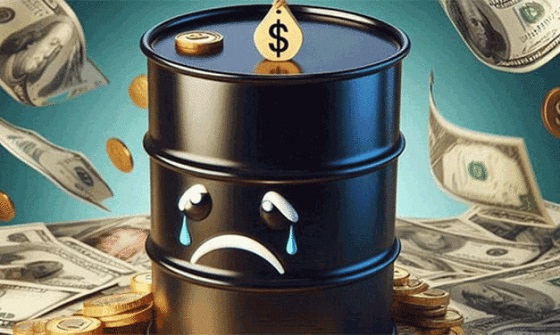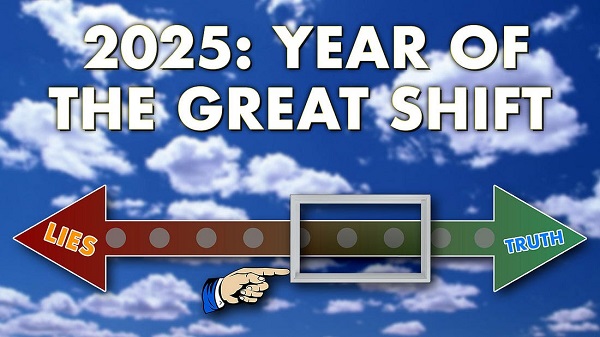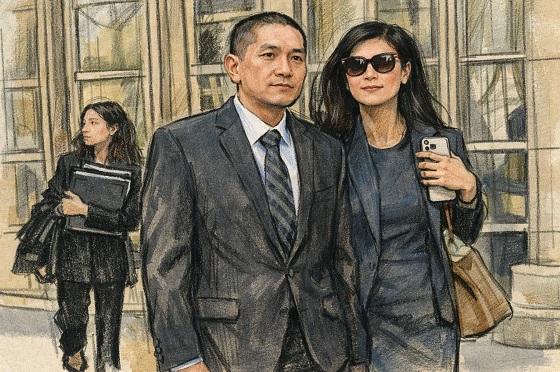Uncategorized
World faces ‘impossible’ task at post-Paris climate talks

KATOWICE, Poland — Three years after sealing a landmark global climate deal in Paris, world leaders are gathering again to agree on the fine print.
The euphoria of 2015 has given way to sober realization that getting an agreement among almost 200 countries, each with their own political and economic demands, will be challenging — as evidenced by President Donald Trump’s decision to pull the United States out of the Paris accord, citing his “America First” mantra.
“Looking from the outside perspective, it’s an impossible task,” Poland’s deputy environment minister, Michal Kurtyka, said of the talks he will preside over in Katowice from Dec. 2-14.
Top of the agenda will be finalizing the so-called Paris rulebook, which determines how countries have to count their greenhouse gas emissions, transparently report them to the rest of the world and reveal what they are doing to reduce them.
Seasoned negotiators are calling the meeting, which is expected to draw 25,000 participants, “Paris 2.0” because of the high stakes at play in Katowice.
Forest fires from California to Greece, droughts in Germany and Australia, tropical cyclones Mangkhut in the Pacific and Michael in the Atlantic — scientists say this year’s extreme weather offers a glimpse of disasters to come if global warming continues unabated.
A recent report by the International Panel on Climate Change warned that time is running out if the world wants to achieve the most ambitious target in the Paris agreement — keeping global warming at 1.5 Celsius (2.7 Fahrenheit). The planet has already warmed by about 1 degree since pre-industrial times and it’s on course for another 2-3 degrees of warming by the end of the century unless drastic action is taken.
The conference will have “quite significant consequences for humanity and for the way in which we take care of our planet,” Kurtyka told the Associated Press ahead of the talks.
Experts agree that the Paris goals can only be met by cutting emissions of carbon dioxide and other greenhouse gases to net zero by 2050.
But the Paris agreement let countries set their own emissions targets. Some are on track, others aren’t. Overall, the world is heading the wrong way.
Last week, the World Meteorological Organization said globally averaged concentrations of carbon dioxide reached a new record in 2017, while the level of other heat-trapping gases such methane and nitrous oxide also rose.
2018 is expected to see another 2
“Everyone recognized that the national plans, when you add everything up, will take us way beyond 3, potentially 4 degrees Celsius warming,” said Johan Rockstrom, the incoming director of the Potsdam Institute for Climate Impact Research.
“We know that we’re moving in the wrong direction,” said Rockstrom. “We need to bend the global carbon emissions no later than 2020 — in two years’ time — to stand a chance to stay under 2 degrees Celsius.”
Convincing countries to set new, tougher targets for emissions reduction by 2020 is a key challenge in Katowice.
Doing so will entail a transformation of all sectors of their economies, including a complete end to burning fossil fuel.
Poor nations want rich countries to pledge the biggest cuts, on the grounds that they’re responsible for most of the carbon emissions in the atmosphere. Rich countries say they’re willing to lead the way, but only if poor nations play their part as well.
“Obviously not all countries are at the same stage of development,” said Lidia Wojtal, an associate with Berlin-based consultancy Climatekos and a former Polish climate negotiator. “So we need to also take that into account and differentiate between the responsibilities. And that’s a huge task.”
Among those likely to be pressing hardest for ambitious measures will be small island nations , which are already facing serious challenges from climate change.
The U.S., meanwhile, is far from being the driving force it was during the Paris talks under President Barack Obama. Brazil and Australia, previously staunch backers of the accord, appear to be following in Trump’s footsteps.
Some observers fear nationalist thinking on climate could scupper all hope of meaningful progress in Katowice. Others are more optimistic.
“We will soon see a large enough minority of significant economies moving decisively in the right direction,” said Rockstrom. “That can have spillover effects which can be positive.”
Poland could end up playing a crucial role in bringing opposing sides together. The country has already presided over three previous rounds of climate talks, and its heavy reliance on carbon-intensive coal for energy is forcing Warsaw to mull some tough measures in the years ahead.
The 24th Conference of the Parties, or COP24 as it’s known, is being held on the site of a Katowice mine that was closed in 1999, after 176 years of coal production. Five out of the city’s seven collieries have been closed since the 1990s, as Poland phased out communist-era subsidies and moved to a market economy.
Still, in another part of the city, some 1,500 miners continue to extract thousands of tons of coal daily.
Poland intends to send a signal that their future, and by extension that of millions of others whose jobs are at risk from decarbonization, isn’t being forgotten. During the first week of talks, leaders are expected to sign a Polish-backed declaration calling for a ‘just transition’ that will “create quality jobs in regions affected by transition to a low-carbon economy.”
Then, negotiators will get down to the gritty task of trimming a 300-page draft into a workable and meaningful agreement that governments can sign off on at the end of the second week.
“(I) hope that parties will be able to reach a compromise and that we will be able to say that Katowice contributed positively to this global effort,” Kurtyka said.
___
Frank Jordans reported from Berlin.
___
Follow Frank Jordans on Twitter at http://www.twitter.com/wirereporter
Frank Jordans And Monika Scislowska, The Associated Press
Uncategorized
Mortgaging Canada’s energy future — the hidden costs of the Carney-Smith pipeline deal


Much of the commentary on the Carney-Smith pipeline Memorandum of Understanding (MOU) has focused on the question of whether or not the proposed pipeline will ever get built.
That’s an important topic, and one that deserves to be examined — whether, as John Robson, of the indispensable Climate Discussion Nexus, predicted, “opposition from the government of British Columbia and aboriginal groups, and the skittishness of the oil industry about investing in a major project in Canada, will kill [the pipeline] dead.”
But I’m going to ask a different question: Would it even be worth building this pipeline on the terms Ottawa is forcing on Alberta? If you squint, the MOU might look like a victory on paper. Ottawa suspends the oil and gas emissions cap, proposes an exemption from the West Coast tanker ban, and lays the groundwork for the construction of one (though only one) million barrels per day pipeline to tidewater.
But in return, Alberta must agree to jack its industrial carbon tax up from $95 to $130 per tonne at a minimum, while committing to tens of billions in carbon capture, utilization, and storage (CCUS) spending, including the $16.5 billion Pathways Alliance megaproject.
Here’s the part none of the project’s boosters seem to want to mention: those concessions will make the production of Canadian hydrocarbon energy significantly more expensive.
As economist Jack Mintz has explained, the industrial carbon tax hike alone adds more than $5 USD per barrel of Canadian crude to marginal production costs — the costs that matter when companies decide whether to invest in new production. Layer on the CCUS requirements and you get another $1.20–$3 per barrel for mining projects and $3.60–$4.80 for steam-assisted operations.
While roughly 62% of the capital cost of carbon capture is to be covered by taxpayers — another problem with the agreement, I might add — the remainder is covered by the industry, and thus, eventually, consumers.
Total damage: somewhere between $6.40 and $10 US per barrel. Perhaps more.
“Ultimately,” the Fraser Institute explains, “this will widen the competitiveness gap between Alberta and many other jurisdictions, such as the United States,” that don’t hamstring their energy producers in this way. Producers in Texas and Oklahoma, not to mention Saudi Arabia, Venezuela, or Russia, aren’t paying a dime in equivalent carbon taxes or mandatory CCUS bills. They’re not so masochistic.
American refiners won’t pay a “low-carbon premium” for Canadian crude. They’ll just buy cheaper oil or ramp up their own production.
In short, a shiny new pipe is worthless if the extra cost makes barrels of our oil so expensive that no one will want them.
And that doesn’t even touch on the problem for the domestic market, where the higher production cost will be passed onto Canadian consumers in the form of higher gas and diesel prices, home heating costs, and an elevated cost of everyday goods, like groceries.
Either way, Canadians lose.
So, concludes Mintz, “The big problem for a new oil pipeline isn’t getting BC or First Nation acceptance. Rather, it’s smothering the industry’s competitiveness by layering on carbon pricing and decarbonization costs that most competing countries don’t charge.” Meanwhile, lurking underneath this whole discussion is the MOU’s ultimate Achilles’ heel: net-zero.
The MOU proudly declares that “Canada and Alberta remain committed to achieving Net-Zero greenhouse gas emissions by 2050.” As Vaclav Smil documented in a recent study of Net-Zero, global fossil-fuel use has risen 55% since the 1997 Kyoto agreement, despite trillions spent on subsidies and regulations. Fossil fuels still supply 82% of the world’s energy.
With these numbers in mind, the idea that Canada can unilaterally decarbonize its largest export industry in 25 years is delusional.
This deal doesn’t secure Canada’s energy future. It mortgages it. We are trading market access for self-inflicted costs that will shrink production, scare off capital, and cut into the profitability of any potential pipeline. Affordable energy, good jobs, and national prosperity shouldn’t require surrendering to net-zero fantasy.If Ottawa were serious about making Canada an energy superpower, it would scrap the anti-resource laws outright, kill the carbon taxes, and let our world-class oil and gas compete on merit. Instead, we’ve been handed a backroom MOU which, for the cost of one pipeline — if that! — guarantees higher costs today and smothers the industry that is the backbone of the Canadian economy.
This MOU isn’t salvation. It’s a prescription for Canadian decline.
Uncategorized
Cost of bureaucracy balloons 80 per cent in 10 years: Public Accounts

The cost of the bureaucracy increased by $6 billion last year, according to newly released numbers in Public Accounts disclosures. The Canadian Taxpayers Federation is calling on Prime Minister Mark Carney to immediately shrink the bureaucracy.
“The Public Accounts show the cost of the federal bureaucracy is out of control,” said Franco Terrazzano, CTF Federal Director. “Tinkering around the edges won’t cut it, Carney needs to take urgent action to shrink the bloated federal bureaucracy.”
The federal bureaucracy cost taxpayers $71.4 billion in 2024-25, according to the Public Accounts. The cost of the federal bureaucracy increased by $6 billion, or more than nine per cent, over the last year.
The federal bureaucracy cost taxpayers $39.6 billion in 2015-16, according to the Public Accounts. That means the cost of the federal bureaucracy increased 80 per cent over the last 10 years. The government added 99,000 extra bureaucrats between 2015-16 and 2024-25.
Half of Canadians say federal services have gotten worse since 2016, despite the massive increase in the federal bureaucracy, according to a Leger poll.
Not only has the size of the bureaucracy increased, the cost of consultants, contractors and outsourcing has increased as well. The government spent $23.1 billion on “professional and special services” last year, according to the Public Accounts. That’s an 11 per cent increase over the previous year. The government’s spending on professional and special services more than doubled since 2015-16.
“Taxpayers should not be paying way more for in-house government bureaucrats and way more for outside help,” Terrazzano said. “Mere promises to find minor savings in the federal bureaucracy won’t fix Canada’s finances.
“Taxpayers need Carney to take urgent action and significantly cut the number of bureaucrats now.”
Table: Cost of bureaucracy and professional and special services, Public Accounts
| Year | Bureaucracy | Professional and special services |
|
$71,369,677,000 |
$23,145,218,000 |
|
|
$65,326,643,000 |
$20,771,477,000 |
|
|
$56,467,851,000 |
$18,591,373,000 |
|
|
$60,676,243,000 |
$17,511,078,000 |
|
|
$52,984,272,000 |
$14,720,455,000 |
|
|
$46,349,166,000 |
$13,334,341,000 |
|
|
$46,131,628,000 |
$12,940,395,000 |
|
|
$45,262,821,000 |
$12,950,619,000 |
|
|
$38,909,594,000 |
$11,910,257,000 |
|
|
$39,616,656,000 |
$11,082,974,000 |
-

 armed forces1 day ago
armed forces1 day agoRemembering Afghanistan and the sacrifices of our military families
-

 Fraser Institute1 day ago
Fraser Institute1 day agoHow to talk about housing at the holiday dinner table
-

 Frontier Centre for Public Policy1 day ago
Frontier Centre for Public Policy1 day agoTent Cities Were Rare Five Years Ago. Now They’re Everywhere
-

 Opinion1 day ago
Opinion1 day agoPope Leo XIV’s Christmas night homily
-

 Fraser Institute17 hours ago
Fraser Institute17 hours agoCarney government sowing seeds for corruption in Ottawa
-

 Alberta17 hours ago
Alberta17 hours agoAlberta Next Panel calls for less Ottawa—and it could pay off
-

 Energy7 hours ago
Energy7 hours agoNew Poll Shows Ontarians See Oil & Gas as Key to Jobs, Economy, and Trade
-

 Energy16 hours ago
Energy16 hours agoWhile Western Nations Cling to Energy Transition, Pragmatic Nations Produce Energy and Wealth










